How does Cadbury create a new bar – and should the chocolate be kept in the fridge? We visit Bourneville as it celebrates its 200th birthday
‘How do you eat yours?’ That’s Cadbury’s renewed slogan for Creme Eggs, coinciding with the iconic chocolate maker’s 200th anniversary.
Granted, the slogan refers to the popular Easter treat, but it also applies to the brand’s other products.
The classic debate is whether chocolate belongs in the fridge or not. I couldn’t get a straight answer on this.
“We’ve done some research into this,” says Adam Harris, Cadbury’s wellness chocolate technology platforms lead.
How do you eat yours? Cadbury produces around 500 million Creme Eggs each year
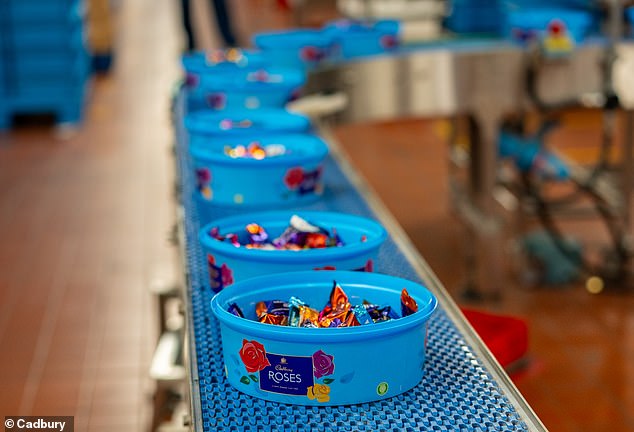
Longevity: Cadbury was launched in 1938 and still makes its Roses chocolate tins
‘Half of consumers say they like their chocolate straight from the fridge, the other half want it at room temperature. It’s very personal.’
If you want to know his opinion: in summer keep it in the refrigerator and in winter at room temperature.
This is not a definitive answer to the debate, but it is the best I can do during my visit to Bourneville, Birmingham, where Cadbury – one of Britain’s most successful exports – is based.
You could argue that many people in this debate are thinking of a Cadbury bar, whether they imagine it in the fridge or not.
They have been making chocolate for two centuries now. The iconic purple wrapper has become a staple in households across the country and is a staple in the daily lives of millions of people. It is a tribute in good times and a comfort in bad times.
However, for Cadbury this is an important part of its marketing, as well as its relationship with its customer base.
Louise Stigant, managing director of Cadbury in the UK, told me: ‘There are important moments like Christmas and Easter, but then there are also times when you get a good report at school and maybe Mum has bought you a Freddo.
“I think that’s part of people’s rituals with the most important people in their lives; their family and their friends. I think that builds love (for the brand).”
It’s not surprising that many people feel protective of the brand.
After Cadbury was acquired by Kraft in 2010, there were rumors that the Dairy Milk recipe had been changed. Many people still accuse the chocolate maker of this.
Cadbury claims it has not changed the composition of the much-loved bar.
But with so much history behind Cadbury and a loyal fan base for its products, creating new products and divesting old ones isn’t easy.
Stigant added: ‘The balance when we think about innovation is holding on to the heritage and the love for the products that people really recognise, and then bringing new and exciting innovations into their baskets’
‘Cadbury has spent 200 years building the brand so that it is close to people’s hearts.’
And while they look back fondly, and have opened a brand new archive department in honor of the anniversary, the company also wants to continue to innovate and develop.
Sarah Foden, Cadbury’s archive manager, said: ‘There’s a quote about an archivist always having one eye on the future and not on the past, because it’s always about how the things of today will be valuable in the future to people looking back.’
The archives are indeed impressive and a treasure trove for any history buff. For those who are more into food, however, the future is bright – and covered in chocolate.
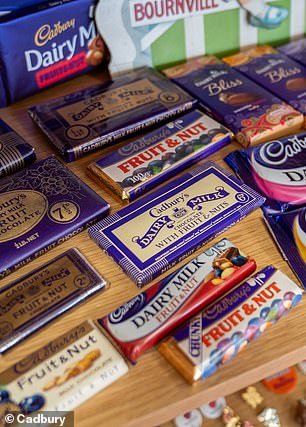
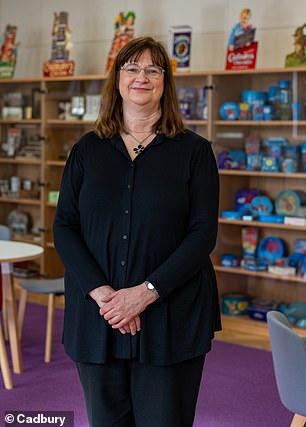
The Bars of the Past: Cadbury Products and Packaging Designs Have Changed Over the Years
Over the past 15 years, Cadbury’s parent company Mondelez has invested £275 million in Cadbury’s UK operations, including expanding the research and development team to 600 employees across its Bourneville and Reading sites.
Cadbury said the development of all chocolate bars made and sold in 150 countries begins at its global R&D centre at its Bourneville plant.
Adam Harris works in a scaled-up kitchen, stocked with ingredients and equipment that allow him and other R&D staff to experiment with new product ideas.
He said: ‘We use lots of different routes of inspiration, so the world of cooking is obviously a great place to start.
“But we look further. We look at consumer trends, what’s happening in the world, what’s happening in the fashion world, what’s happening in the auto industry. It’s all going to affect consumer lifestyles.”
He said: ‘That’s why we keep going back to the consumers. If the consumers say they don’t like it, we don’t launch it, because we have to make sure they’re happy and that they expect these products to taste good.’
But tastes change, says Harris, and the products Cadbury produces must evolve with them.
It’s true, after looking through the Cadbury archives I’m not sure many consumers would be excited about a Cadbury Marzipan Tray or, for that matter, a Cadbury Pineapple bar.
“One of my favourite products was Cadbury Snaps, which was a curved chocolate, a bit like a chocolate Pringle… but in that case it didn’t meet consumer needs so we took it off the market,” Harris told This is Money.
‘A product for today may not meet the needs of the future. That’s why we are constantly innovating. Consumers want new opportunities, new flavors, new textures and new tastes.
One such development is Cadbury’s recently launched Dairy Milk & More line, consisting of ‘Caramel Nut Crunch’ and ‘Nutty Praline Crisp’.
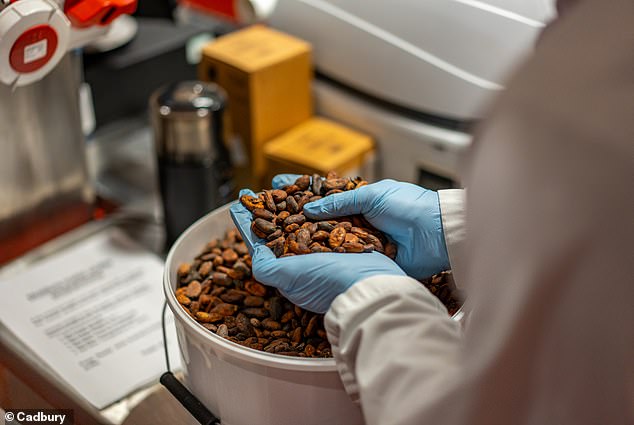
Innovation: Adam Harris says consumer tastes are constantly changing, meaning the R&D department has to find new ways to use their ingredients
The reason for their existence? ‘Younger consumers want multi-sensory food journeys. The product has multiple textures, which makes it a different eating experience than a bar of Dairy Milk.’
However, the innovation process does not only consist of Harris and his colleagues experimenting with ingredients in the kitchen.
The R&D department in Bourneville has its own pilot plant, where it carries out test runs with new products.
‘We do everything, from preparing meals in the kitchen to production.
“And at every step, we have to understand what the changes are. As you scale things up, it obviously has implications for how the product is made,” Harris said.
‘In the pilot plant we have everything from laboratory level to almost the same level as in the factory.’
This allows the innovation team to test whether their ideas can work on a near-industrial scale and whether they can actually be implemented in the factory.
Not surprisingly, the plant dwarfs the single pilot line, with a total of 23 lines.
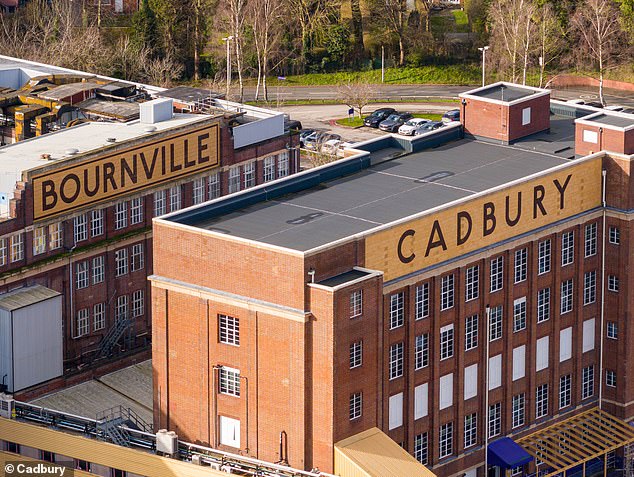
Community focus: Cadbury says it has its home base in Bourneville, where it has been located since 1879
How Cadbury focuses on community
While the Bourneville complex is certainly not small, it is surprising that Cadbury has remained on the same site since it was built in 1879, rather than moving like so many other companies.
The brand didn’t start in Bourneville, of course, as John Cadbury, a Quaker, originally set up a grocery shop in Bull Street, in the centre of Birmingham. It was his sons, George and Richard, who decided to move the business from the industrial heart of the city to its current location in Bourneville.
“Cadbury’s home base is Bourneville,” Foden tells me: “In terms of location, it’s really important for us to be here and on this wider campus.”
Indeed, Cadbury says that community is at the heart of the brand, with the Bourneville village that surrounds the campus built next to the factory to house the workforce.
Cadbury remains active in the area through the Cadbury Foundation, which invests in local community projects and charities.
“If you go back 15 years, the cost of making chocolate here in Bournville was much higher than the average in Europe,” Stigant said. “That’s why (Mondelez’s) investment was important to secure production at the Bournville site. It allowed us to increase efficiency and ensure we could compete with other chocolate manufacturers.”
Although Cadbury is celebrating the brand’s 200th anniversary in style, the focus is still very much on the future and on innovation.
“It’s really important that this factory, this business, is in good enough shape to last another 200 years and still be there for future families to enjoy Cadbury,” Stigant said.
Some links in this article may be affiliate links. If you click on them, we may earn a small commission. That helps us fund This Is Money and keep it free. We do not write articles to promote products. We do not allow commercial relationships to influence our editorial independence.

